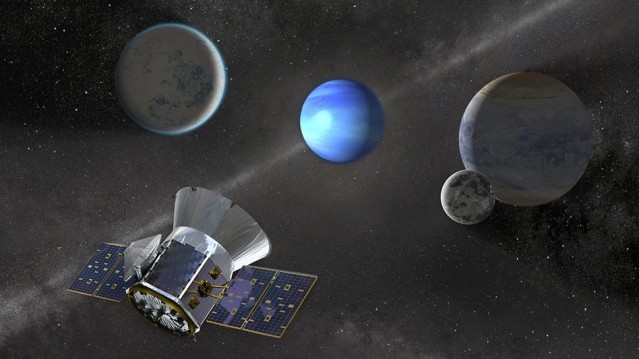
NASA’s Transiting Exoplanet Survey Satellite, or TESS, has discovered a third small planet outside our solar system, scientists announced in January.
The new planet, named HD 21749b, orbits a bright dwarf star about 53 light-years away, in the constellation Reticulum, and has the longest orbital period of the three planets so far identified. HD 21749b journeys around its star in a leisurely 36 days, while the “super-Earth” called Pi Mensae b has a 6.3-day orbit and the rocky world known as LHS 3844b speeds around its star in just 11 hours. All three were discovered in the first three months of TESS observations.
The MIT-led TESS mission is monitoring the sky, sector by sector, training its four onboard cameras on each one for 27 days. The idea is to zero in on momentary dips in the light of about 200,000 nearby stars—an indication that a planet has passed in front of them.

The surface of the new planet is likely around 300 °F (149 °C)—relatively cool given its proximity to its star, which is less bright than the sun.
“It’s the coolest small planet that we know of around such a nearby star,” says MIT postdoc Diana Dragomir, who led the discovery.
HD 21749b is about three times the size of Earth—and a whopping 23 times as massive. But it’s probably not rocky, and therefore not habitable. “The planet probably has an atmosphere composed of heavy molecules, such as water,” says Dragomir.
Serendipitously, the researchers also detected evidence of a second planet in the same planetary system, with a shorter, 7.8-day orbit. If confirmed, it could be the first Earth-size planet discovered by TESS.
Keep Reading
Most Popular
Large language models can do jaw-dropping things. But nobody knows exactly why.
And that's a problem. Figuring it out is one of the biggest scientific puzzles of our time and a crucial step towards controlling more powerful future models.
The problem with plug-in hybrids? Their drivers.
Plug-in hybrids are often sold as a transition to EVs, but new data from Europe shows we’re still underestimating the emissions they produce.
Google DeepMind’s new generative model makes Super Mario–like games from scratch
Genie learns how to control games by watching hours and hours of video. It could help train next-gen robots too.
How scientists traced a mysterious covid case back to six toilets
When wastewater surveillance turns into a hunt for a single infected individual, the ethics get tricky.
Stay connected
Get the latest updates from
MIT Technology Review
Discover special offers, top stories, upcoming events, and more.